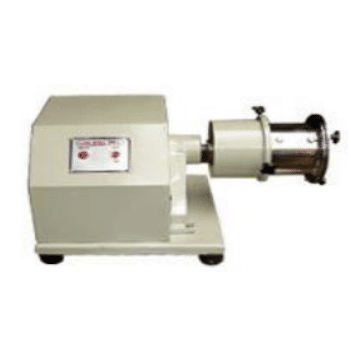The ball mill is a fundamental piece of equipment widely used in various industries for grinding and mixing materials. This apt machine plays an important role in processes ranging from pharmaceuticals and ceramics to mining and metallurgy.
What is a Ball Mill?
A ball mill is a cylindrical device used for grinding and mixing different materials. It consists of a rotating drum filled with various grinding media, like balls, rods, or pebbles, which are used to reduce the size of particles by impact and attrition. Ball mills are available in a range of sizes and setups, catering to a variety of uses.
Uses of Ball Mill
- Grinding and Mixing: The main use of ball mills is to grind and mix materials to create a blend or fine powder in a specific ratio. This is important in industries like ceramics, where raw materials must be mixed in specific quantities to create high-quality products.
- Size Reduction: Ball mills are important for reducing the size of solid materials. In mining and metallurgy, they are used to crush and grind ore into fine particles, which can then be processed further, such as separating valuable minerals from the waste.
- Material Preparation: In industries like the pharmaceutical and chemical sectors, ball mill is used to prepare materials for various processes. You can employ it to mix, disperse, and refine compounds.
- Particle Size Control: Ball mill does precise control over particle size, making them crucial in industries that require consistent product quality, like the food and cosmetics industries.
Applications of Ball Mill
- Pharmaceuticals: Ball mills are used for milling and blending active pharmaceutical ingredients, excipients, and other components to create drug formulations. This is a crucial aspect in the production of medications that ensures uniform quality and effectiveness.
- Ceramics: The ceramic industry relies on ball mills for mixing raw materials and achieving the proper particle size distribution for the production of ceramic tiles, pottery, and porcelain.
- Mining and Metallurgy: Ball mill is extensively used in these industries for ore grinding and mineral processing, helping extract valuable metals and minerals from raw ores.
- Chemical Industry: In the chemical sector, ball mills are employed for processes like mixing, blending, and refining chemicals. They also facilitate the creation of pigments and dyes.
- Paints and Coatings: Ball mill is used to grind and disperse pigments and other materials in the production of paints, coatings, and inks, for color consistency and quality.
Relevance in the Industry
The ball mill possesses versatile capabilities, encompassing tasks like blending, grinding, size reduction, and particle size regulation, rendering it an indispensable tool across various industries. It is vital for maintaining product quality, optimizing processes, and to get the desired material characteristics.
How Does It Work?
A ball mill operates by rotating a cylindrical drum, which contains grinding media and the material to be processed. As the drum rotates, the grinding media collide with the material, reducing its size through impact and attrition.
The size of the grinding media and the rotation speed of the drum determine the final particle size. You can add or remove material in the drum permitting continuous or batch processing.


